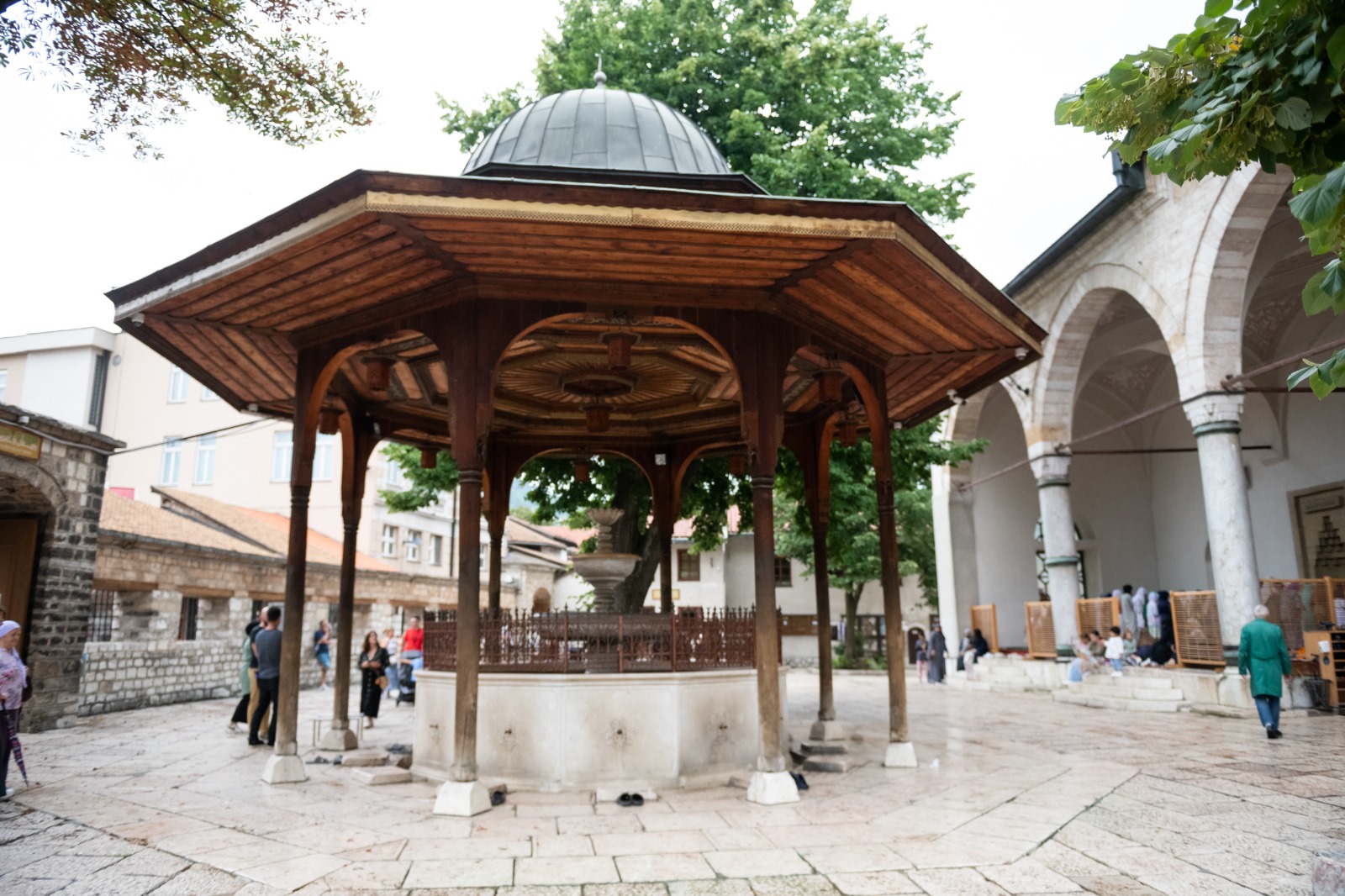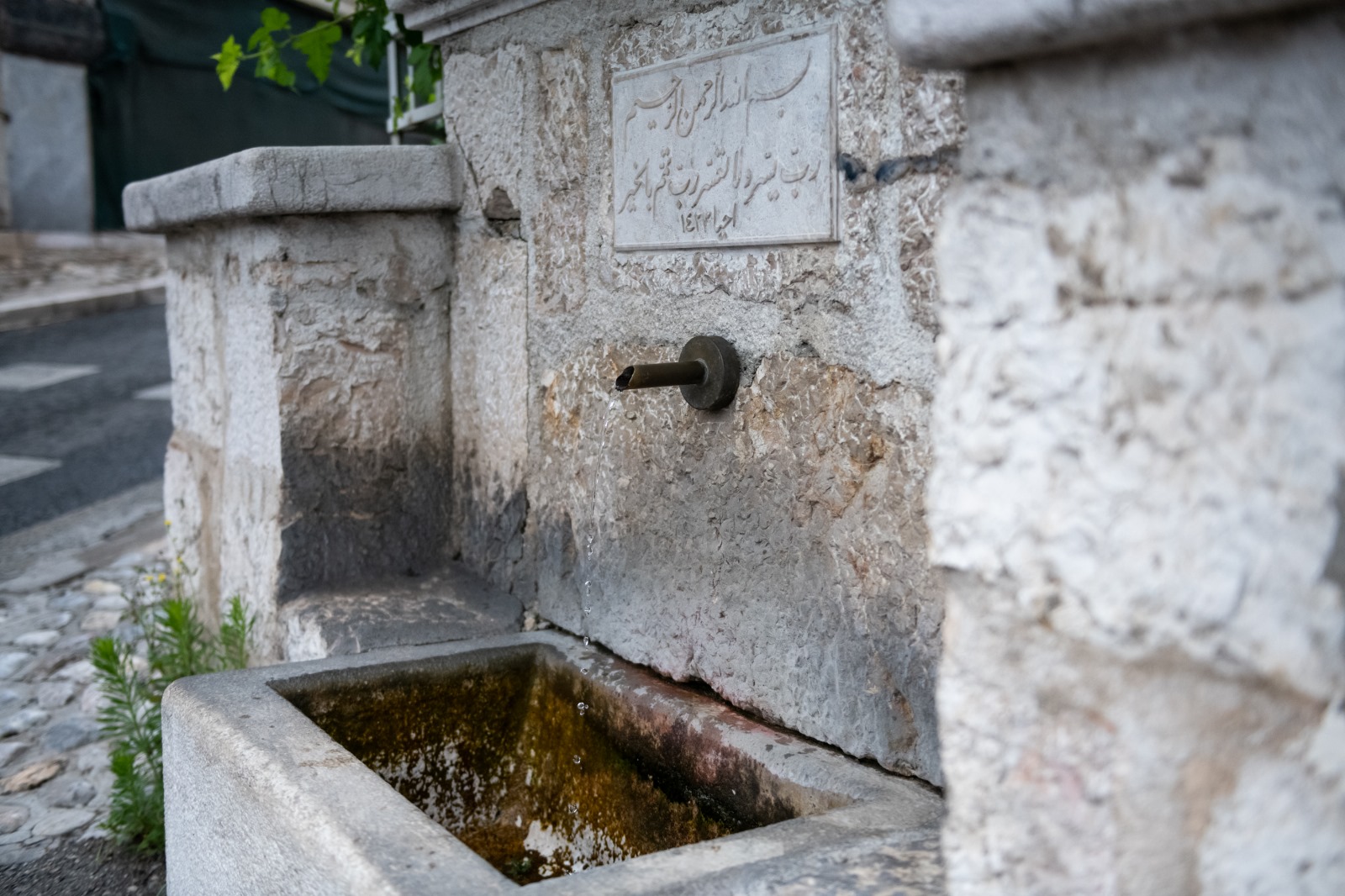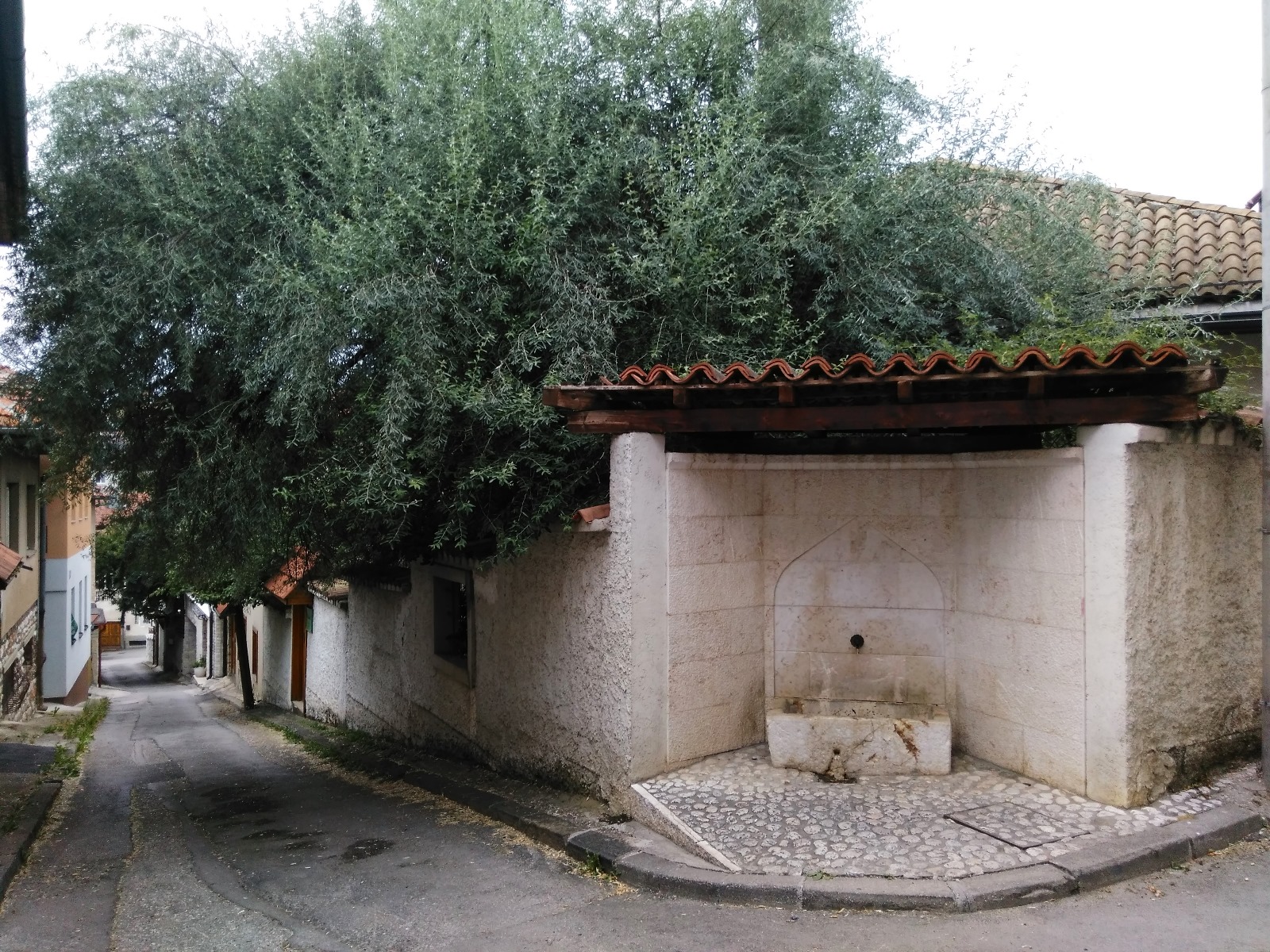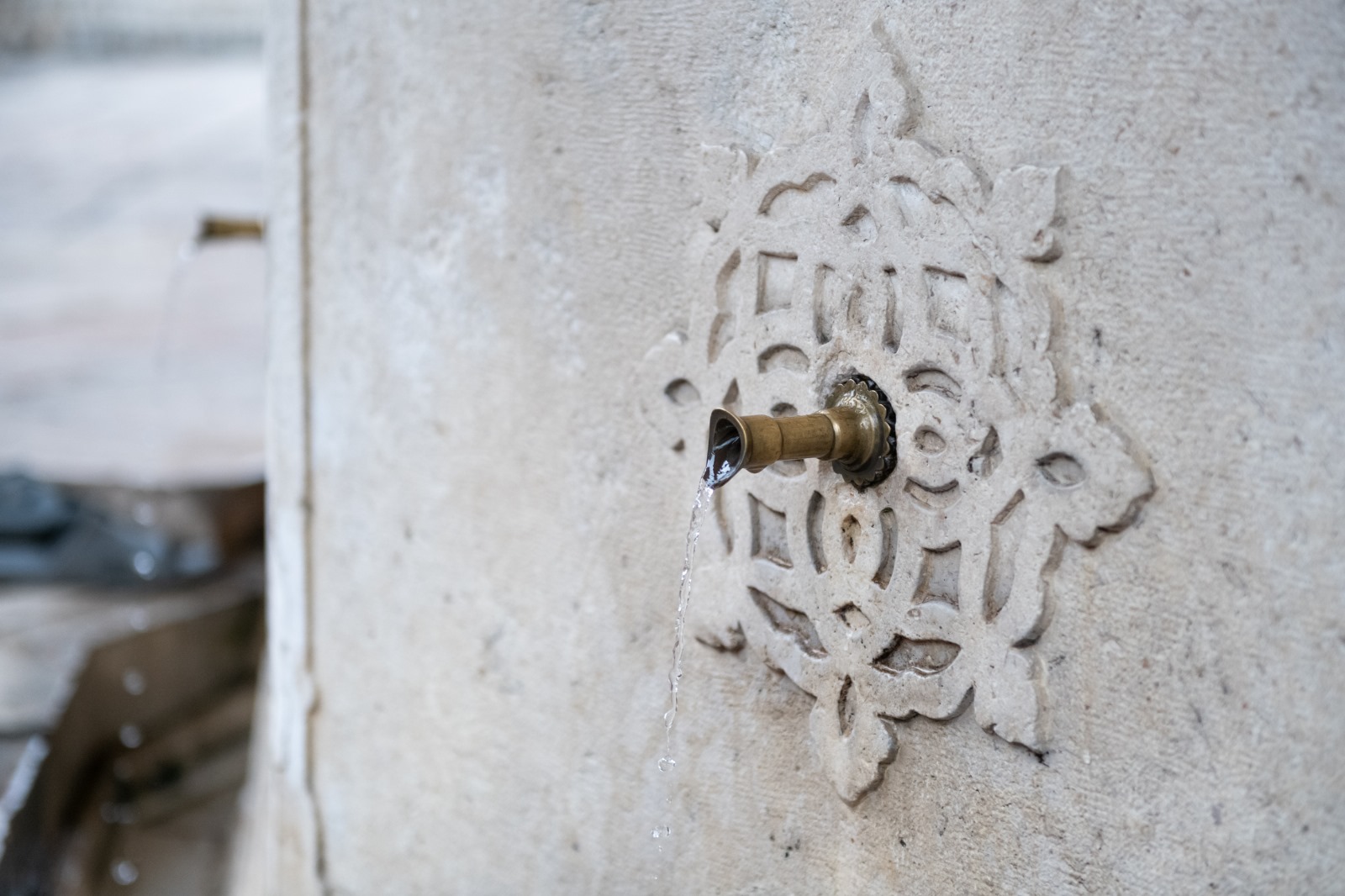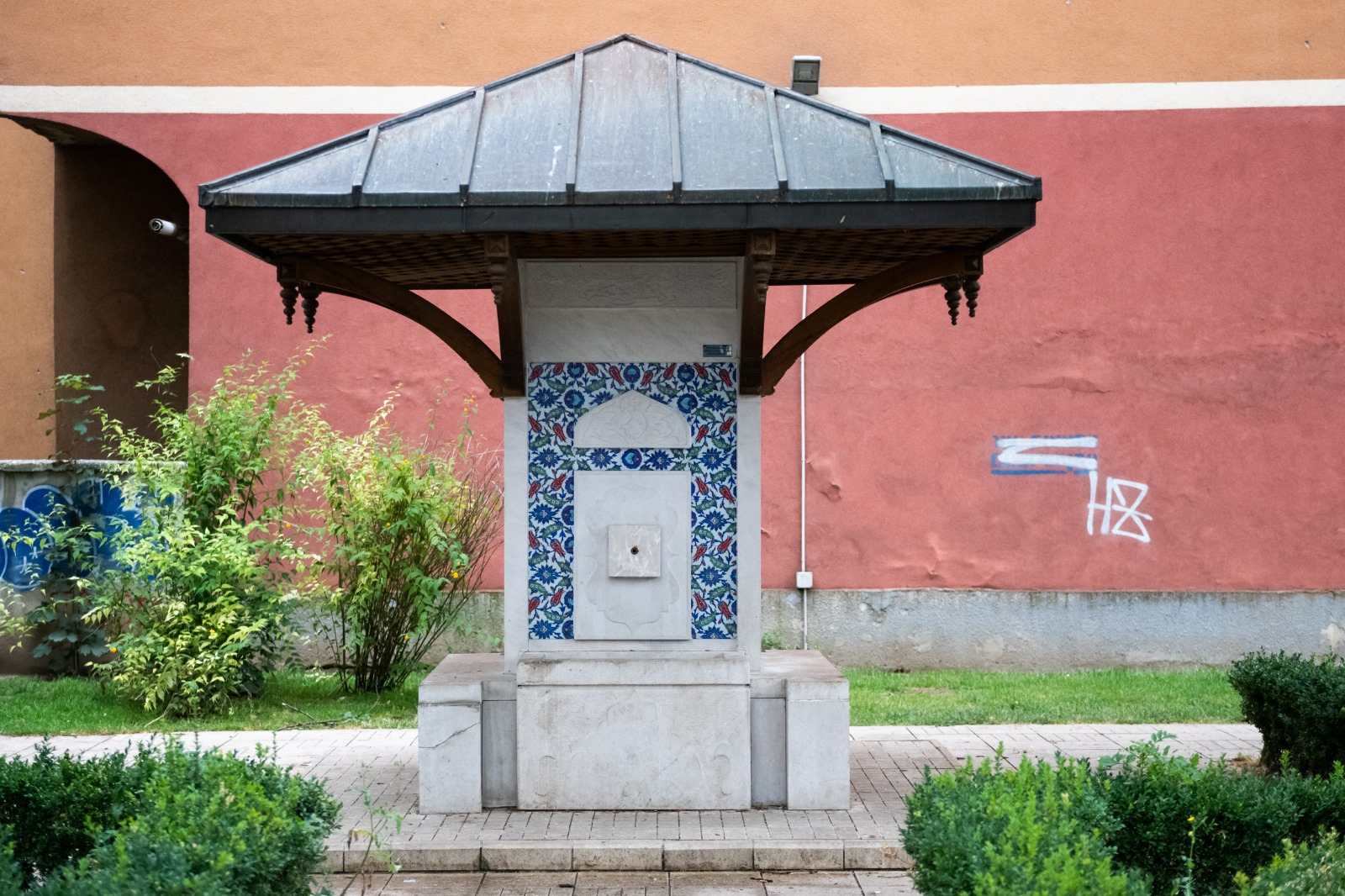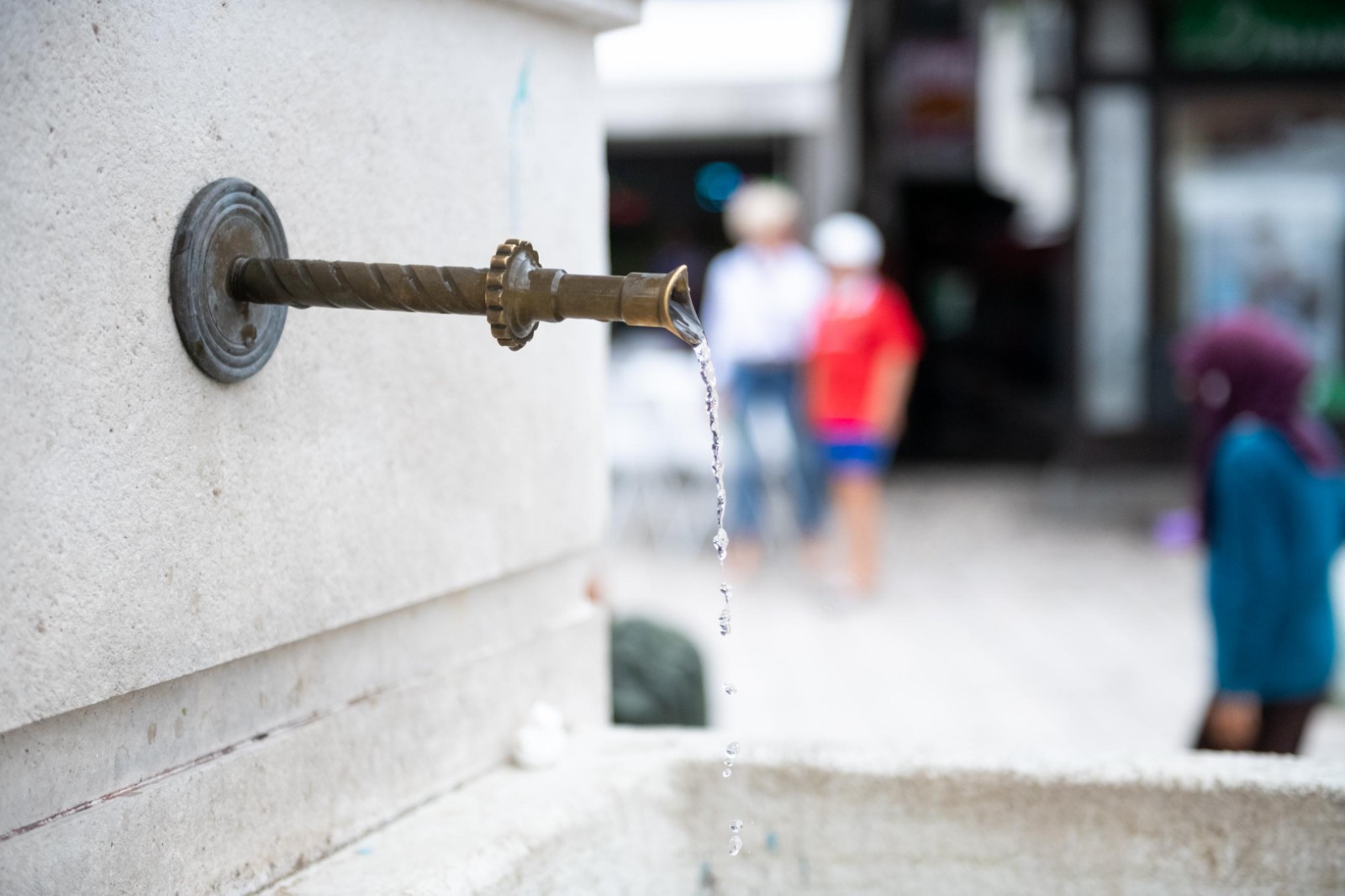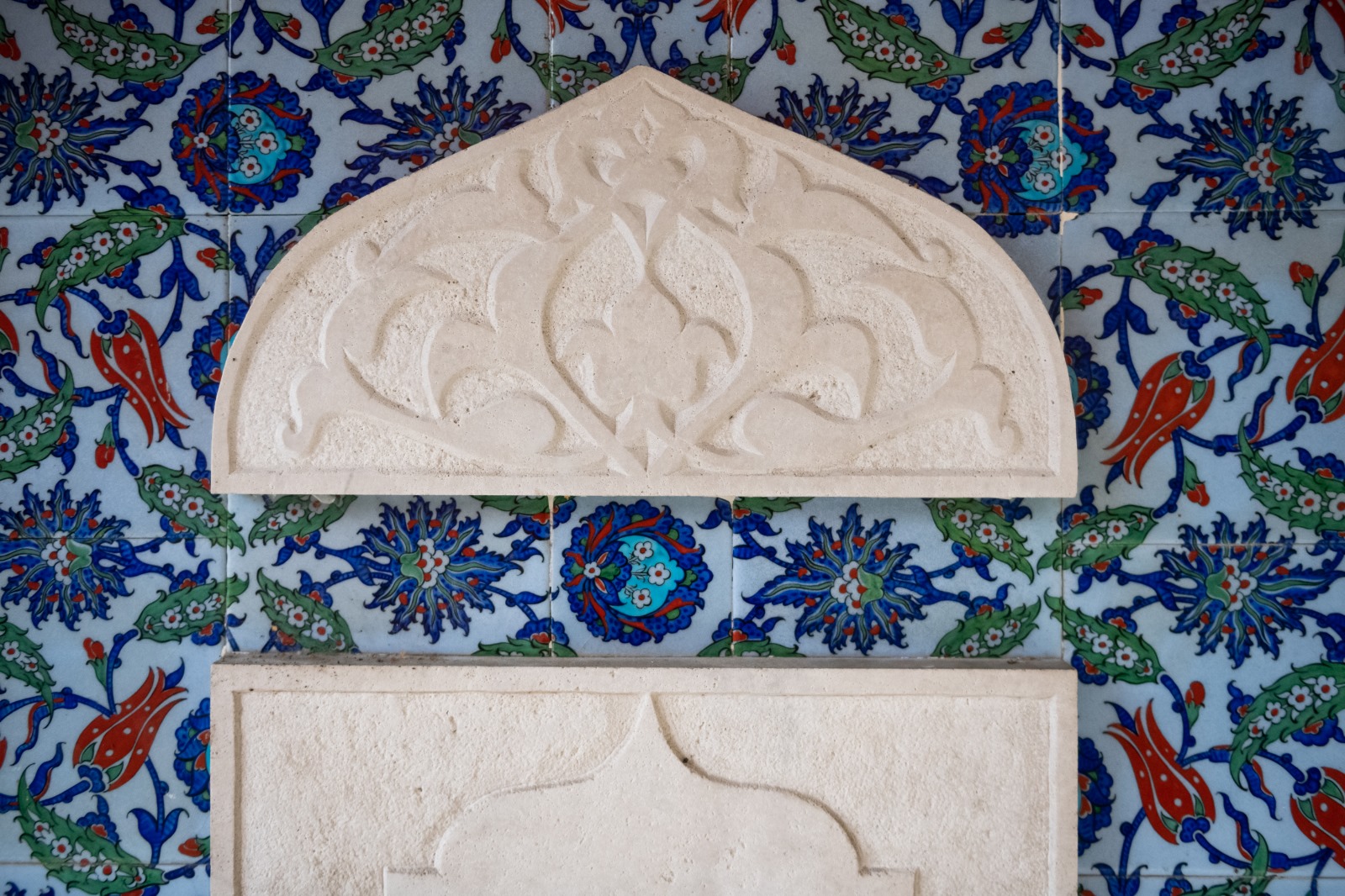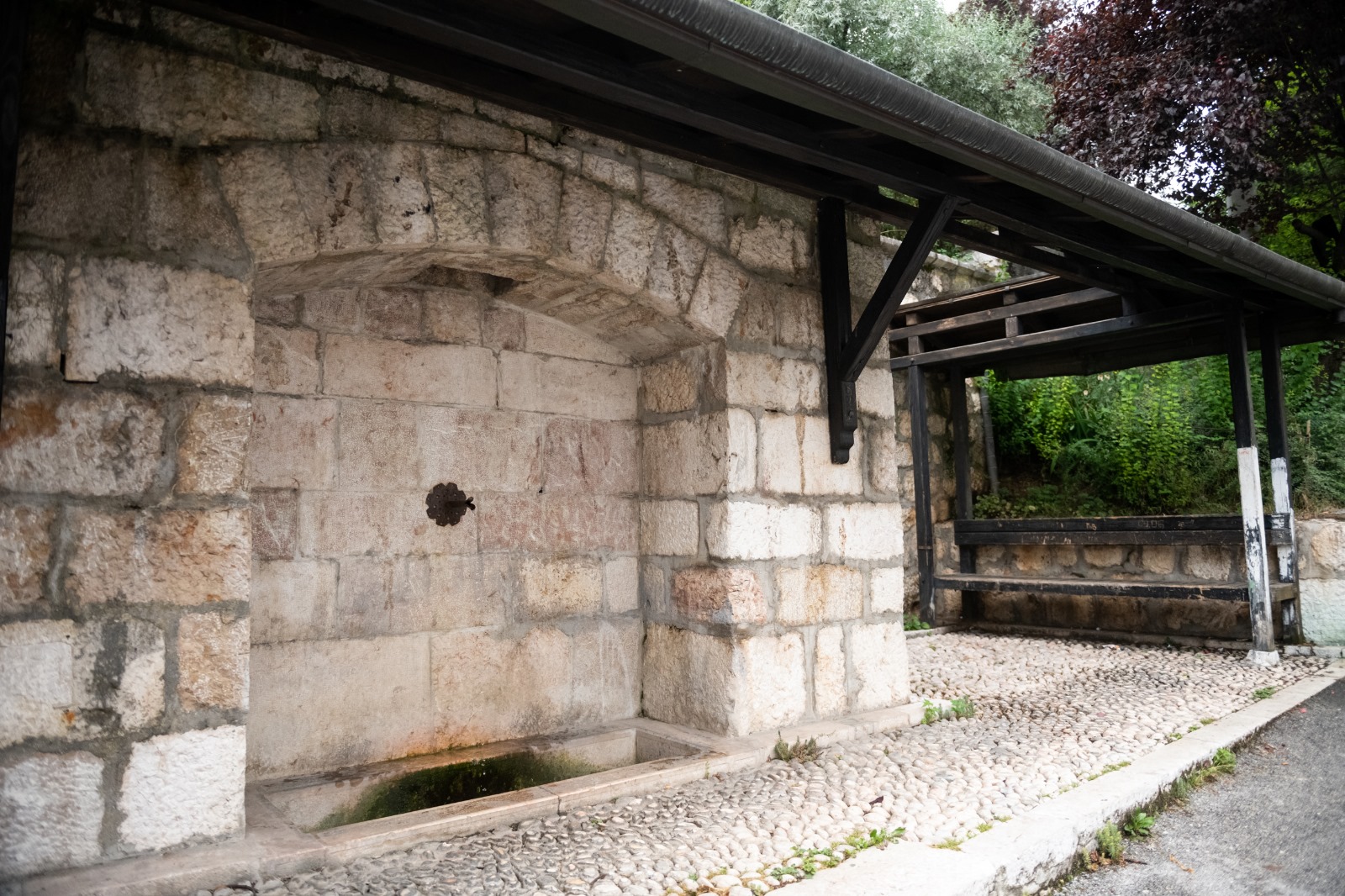Regaining a sense of belonging
Map4Water : ONE THOUSAND FOUNTAINS CITY
Revitalizing the tradition and infrastructure for public drinking water fountains in Sarajevo
The project maps public drinking water fountains and invites different stakeholders to care, share and upgrade an undervalued public utility. The pilot interactive database shows locations and structures for drinking water available for residents and visitors, once typical of neighbourhoods and streetscapes in Sarajevo. The digital platform reaches out to local authorities to take lead in necessary maintenance, restoration and future integrated management of this valuable public infrastructure.
EU Member State, Western Balkans or Ukraine
Bosnia and Herzegovina
Local
Sarajevo
No
No
Mainly urban
It refers to a physical transformation of the built environment (hard investment)
Yes
2023-09-29
No
No
No
As an individual partnership with other persons/organisation(s)
The project represents a pilot mapping of the existing public water fountains and aims to revitalise a rich tradition of public water provision which dates back to the foundation of Sarajevo (15th c.). Each historic urban micro-rayon had a public fountain (cesma) as a community landmark, ensuring free access to clean drinking water as an essential right. Focusing specifically on one element of public space (fountain), the project aims to establish the pathways for an integrative stakeholder approach in the framework of public utility management, heritage restoration and maintenance (local authority), engaging with community (citizens and tourists) via an open source digital platform.
The targeted institutional stakeholders (municipalities) and professional community (architects, landscape architects) demonstrated support by providing the baseline information essential for conducting the field surveys of the public water fountains managed by the municipalities. As the preliminary outcome, they also engaged in several conferences, affirming support (https://acrobat.adobe.com/link/review?uri=urn:aaid:scds:US:ddb2de46-aa8b-33f5-bea6-899554da7bfe6 ).
Subject to the further phases of the project (completed revitalisation, renovation and maintenance of the specific fountains), this will lead to a reduction in the amount and cost of plastic waste generated by the excessive use of bottled water (a secondary outcome).
The key project output is the completion of the research study (D. Jozic) with initially 50 surveyed fountains and the development of the website (https://www.cesma.ba), an open source for citizens and professionals (an interactive map). Since the launch (Dec. '22), the updated information has doubled to 100 fountains demonstrating the stakeholders' engagement with the platform.
The next phase of the project is the development of a mobile application to complement and strengthen the online interactive platform for citizens and visitors.
The targeted institutional stakeholders (municipalities) and professional community (architects, landscape architects) demonstrated support by providing the baseline information essential for conducting the field surveys of the public water fountains managed by the municipalities. As the preliminary outcome, they also engaged in several conferences, affirming support (https://acrobat.adobe.com/link/review?uri=urn:aaid:scds:US:ddb2de46-aa8b-33f5-bea6-899554da7bfe6 ).
Subject to the further phases of the project (completed revitalisation, renovation and maintenance of the specific fountains), this will lead to a reduction in the amount and cost of plastic waste generated by the excessive use of bottled water (a secondary outcome).
The key project output is the completion of the research study (D. Jozic) with initially 50 surveyed fountains and the development of the website (https://www.cesma.ba), an open source for citizens and professionals (an interactive map). Since the launch (Dec. '22), the updated information has doubled to 100 fountains demonstrating the stakeholders' engagement with the platform.
The next phase of the project is the development of a mobile application to complement and strengthen the online interactive platform for citizens and visitors.
Revitalising heritage of public utility
Public health - digital and real access to water in public space
Water as enabler of public space regeneration
Sustainability through shared care for public utility
Drinking water fountain connecting community
The digital access to public information about the drinking water fountain locations and infrastructure in Sarajevo is designed to create a partnership of stakeholders among citizens, visitors and public authorities in charge of caring and maintaining the water quality, public access, service and infrastructure. This partnership is a key to the sustainability of the project and draws support from research (academic), professional and civic platforms (local, international) and advocacy at several levels of local government (Municipalities and Federal Parliament). This is expected further to promote, treasure and better maintain drinking water fountains in the city as a vital part of public utility, tradition and heritage, in line with the just green transition, engaging and educating the public of the benefits of publicly accessible clean tap water.
The online platform (https://www.cesma.ba) allows residents, visitors, decision makers and other relevant stakeholders in Sarajevo to find and add the information (photos and descriptions) about public drinking fountains on an interactive map. These can be uploaded while the responsible institutions can send alerts about routine maintenance work, water quality and other regular updates making the website a hub for exchange of information between service providers and end users in a coordinated, efficient and sustainable manner.
The project is also promoting a reduction of plastic (bottles') waste proliferation by using reusable bottles. In a scale up phase, a concept for new drinking fountain typology is designed for public transport hotspots. This includes a provision for a reusable bottle dispenser integrated in the water fountain as a prototype street furniture component and a unique place making element in the entire new chain of drinking fountains constructed by the local authorities and public transport providers.
The next phase of the project will focus on citizen engagement via a free mobile app.
The online platform (https://www.cesma.ba) allows residents, visitors, decision makers and other relevant stakeholders in Sarajevo to find and add the information (photos and descriptions) about public drinking fountains on an interactive map. These can be uploaded while the responsible institutions can send alerts about routine maintenance work, water quality and other regular updates making the website a hub for exchange of information between service providers and end users in a coordinated, efficient and sustainable manner.
The project is also promoting a reduction of plastic (bottles') waste proliferation by using reusable bottles. In a scale up phase, a concept for new drinking fountain typology is designed for public transport hotspots. This includes a provision for a reusable bottle dispenser integrated in the water fountain as a prototype street furniture component and a unique place making element in the entire new chain of drinking fountains constructed by the local authorities and public transport providers.
The next phase of the project will focus on citizen engagement via a free mobile app.
Since its foundation, up to the 17th c. the historic core of Sarajevo had over 110 public water fountains, 5 public baths (hamams) and 670 private baths. Water was collected from over 700 wells and 1060 clean water sources deserving the “City of A Thousand Fountains” poetic elation (Nerkesy). The public fountains allowed not only clean fresh water for personal use but also created meeting points and space for respite from daily business. However, the intensive and fast urbanisation had neglected these public amenities thus undermining a valuable tradition, utility and public right (Resolution UN, 2010).
Revitalising Sarajevo’s water fountains advances a three-fold approach to aesthetics and quality of experience for people through (1) mapping, (2) engaging, (3) sharing responsibilities and action. The digital platform with a pilot mapping of existing fountains provides a template with immediacy, transparency and openness of information and a visual access to a potentially unknown spatial element (public utility). It connects to a real three-dimensional structure inviting to be experienced and utilised and amended (citizens, visitors). It highlights the condition (often poor) and points to the local authorities in charge of maintenance and revitalisation. Expanding from a website to a mobile app allows the public to locate drinking water fountains (not otherwise mapped), while also providing a tool for local authority to record the functionality, use and maintenance.
The aesthetic value and a sense of place is location specific and point to the value of spatial composition, functionality, typology and use of materials in the built context of Sarajevo’s historic core and its peripheries. The condition survey of fountains signals the urgent need for adequate maintenance of an almost lost tradition as well as for careful planning for new public fountains with involvement of the professional community and civic society through a public design competition.
Revitalising Sarajevo’s water fountains advances a three-fold approach to aesthetics and quality of experience for people through (1) mapping, (2) engaging, (3) sharing responsibilities and action. The digital platform with a pilot mapping of existing fountains provides a template with immediacy, transparency and openness of information and a visual access to a potentially unknown spatial element (public utility). It connects to a real three-dimensional structure inviting to be experienced and utilised and amended (citizens, visitors). It highlights the condition (often poor) and points to the local authorities in charge of maintenance and revitalisation. Expanding from a website to a mobile app allows the public to locate drinking water fountains (not otherwise mapped), while also providing a tool for local authority to record the functionality, use and maintenance.
The aesthetic value and a sense of place is location specific and point to the value of spatial composition, functionality, typology and use of materials in the built context of Sarajevo’s historic core and its peripheries. The condition survey of fountains signals the urgent need for adequate maintenance of an almost lost tradition as well as for careful planning for new public fountains with involvement of the professional community and civic society through a public design competition.
The very theme of the project is centred on accessibility and affordability highlighting the significance of water infrastructure as common public good that can galvanise communities to positive action in the environment, place making and regaining the sense of belonging. The project combines the elements of academic research at Master’s level (Dino Jozic), with a local civil society and NGO’ engagement (The Green Council BiH / Sanela Klaric, Emira Hukic, Melisa Gazdic) through a cross-sectoral expertise (ecology, urban forestry, landscape architecture, IT, heritage, architecture) which results in the programme and the roadmap for its implementation. Throughout the process, the inputs by citizens and civil society facilitated a baseline survey and a survey of initially 50 fountains which quickly doubled to 100 since the website launch.
A baseline survey broadened the engagement with a professional community - architects and landscape architects - facilitated by the Association of Architects in B&H and the Association of Landscape architects in B&H, which focused on the discussion and determination of the optimal locations for scaling up and providing new public drinking fountains. In addition, the Green Council is a partner with the NEB Forum BiH (Selma Harrington, Heritage and Sustainability Expert; Architects Council of Europe; BHAAAS-Bosnian academic diaspora member) with over two-years collaboration and knowledge exchange, adding an international dimension to the project.
More direct engagements with a non-expert local population will be further facilitated by the development of a mobile app. This will include a survey based on the preliminary findings and conclusions of the research, particularly in relation to future locations for public drinking water fountains and the revitalisation needs.
A baseline survey broadened the engagement with a professional community - architects and landscape architects - facilitated by the Association of Architects in B&H and the Association of Landscape architects in B&H, which focused on the discussion and determination of the optimal locations for scaling up and providing new public drinking fountains. In addition, the Green Council is a partner with the NEB Forum BiH (Selma Harrington, Heritage and Sustainability Expert; Architects Council of Europe; BHAAAS-Bosnian academic diaspora member) with over two-years collaboration and knowledge exchange, adding an international dimension to the project.
More direct engagements with a non-expert local population will be further facilitated by the development of a mobile app. This will include a survey based on the preliminary findings and conclusions of the research, particularly in relation to future locations for public drinking water fountains and the revitalisation needs.
The first phase of the project consisted of the field surveys of the public water fountains managed by the local authorities, all of which supplied the lists of locations and structures in their care. The baseline information was obtained from the municipalities Stari Grad, Sarajevo Centar, Novi Grad, Novo Sarajevo and Ilidza. The field survey identified a poor condition and a substantial lack of maintenance which is recorded for each surveyed fountain. In parallel to initial mapping and condition surveys, several conference meetings were organised to explain the aims of the project to various stakeholders and to publicly launch the website in December 2022. The representatives of local authorities, public service institutions and local communities have all shown resolve to participate and achieve a better coordination on this matter, highlighting the maintenance issues and giving a positive feedback to the questions the project raised. The representatives from the Sarajevo Canton, Ministry of Culture and Sports, Deputy Lord Major, Tourism Office, Public Health Protection Office and Federal parliamentarians were all present at the Conference held in October ‘23 (https://acrobat.adobe.com/link/review?uri=urn:aaid:scds:US:ddb2de46-aa8b-33f5-bea6-899554da7bfe6 ).
In addition, the professional community of some 100 architects and landscape architects participated in the online survey designed to assess the best locations for potential provision of the new drinking water fountains. The survey results showed preference for open green areas and parks, in the vicinity of educational and health institutions, and in public transport hotspots (tram and bus stops, etc.), to potentially have the most beneficial public impact.
In addition, the professional community of some 100 architects and landscape architects participated in the online survey designed to assess the best locations for potential provision of the new drinking water fountains. The survey results showed preference for open green areas and parks, in the vicinity of educational and health institutions, and in public transport hotspots (tram and bus stops, etc.), to potentially have the most beneficial public impact.
The project generated a growing response from a variety of stakeholders, starting from academic (Lead Researcher + Academic Supervisors) and reaching out to the NGO’s (the Green Council and the Heinrich Boll Foundation Sarajevo) with the benefit of obtaining a cross-disciplinary expertise and complementary research data. The support by the local Municipalities who were contacted to provide the lists of fountains in their care proved essential to conduct the field work and corroborate data. This was mirrored by the interest from the local authorities and utility management departments resulting in an increased momentum which is leading to the preliminary policy drafting (the Green Council, Municipalities, Utility companies) at the level of Federal parliament of the BiH.
The international NGO, the Foundation Heinrich Boll (Sarajevo) has provided financial support for the two-years of project activity and promotion, including the conference and the website.
The Green Council is a partner with the international knowledge exchange platform NEB Forum BiH (Selma Harrington, Heritage and Sustainability Expert; Architects Council of Europe; BHAAAS-Bosnian academic diaspora member)( https://www.ace-cae.eu/activities/new-european-bauhaus-forum-bih/) with over two-years collaboration among local and regional networks and individuals working in the fields of built environment, urban design, landscape design, architecture and heritage, gathered along the synergies and principles of the New European Bauhaus initiative. The NEB Forum BiH is actively advancing ‘the EU Green Deal as cultural movement ‘ agenda with an ambition to build and strengthen the professional capacity in related fields and to contribute to the region’s EU integration. Its members regularly contribute to the Sustainability Symposia during the annual BHAAAS Conferences held each year in a different city of the BiH (D. Jozic, S. Klaric, S.Harrington) and the application is a result of the synergy among them.
The international NGO, the Foundation Heinrich Boll (Sarajevo) has provided financial support for the two-years of project activity and promotion, including the conference and the website.
The Green Council is a partner with the international knowledge exchange platform NEB Forum BiH (Selma Harrington, Heritage and Sustainability Expert; Architects Council of Europe; BHAAAS-Bosnian academic diaspora member)( https://www.ace-cae.eu/activities/new-european-bauhaus-forum-bih/) with over two-years collaboration among local and regional networks and individuals working in the fields of built environment, urban design, landscape design, architecture and heritage, gathered along the synergies and principles of the New European Bauhaus initiative. The NEB Forum BiH is actively advancing ‘the EU Green Deal as cultural movement ‘ agenda with an ambition to build and strengthen the professional capacity in related fields and to contribute to the region’s EU integration. Its members regularly contribute to the Sustainability Symposia during the annual BHAAAS Conferences held each year in a different city of the BiH (D. Jozic, S. Klaric, S.Harrington) and the application is a result of the synergy among them.
The Architects, landscape architects and heritage experts worked together with the IT experts to produce the interactive map of the public drinking fountains. The information they gathered was used by a waste management expert to produce a preliminary assessment of the potential impact of public drinking water fountains on plastic waste reduction.
The resulting information is a work in progress, currently used for further research and among the public representatives/parliamentarians (S. Klaric), engaged in formulating policy initiatives and proposals at several levels of governance aimed to secure the commitment to the further development of the project.
The significant outcome of the cross-sectoral nature of the project implementation is the new Roadmap prepared by the Green Council (see pdf-B/C/S) which builds the case for revitalisation of the drinking water fountains in Sarajevo and a strategy with all stakeholders (local authorities, civil society, residents) and plan of action (renovation, education and promotion). Prepared by the Green Council experts (urban heritage, urban forestry, ecology, landscape architecture, water supply and quality) The Roadmap includes the critique of challenges and opportunities, including the scarcity of existing regulation and legislation, and the analysis of similar successful approaches in the EU cities. It utilises the evidence on the use of plastic water bottles in Sarajevo's municipalities and proposes the indicators for measuring the outcomes of the program of the water fountains revitalisation. It also identifies the potential sources and mechanisms for local financing.
The resulting information is a work in progress, currently used for further research and among the public representatives/parliamentarians (S. Klaric), engaged in formulating policy initiatives and proposals at several levels of governance aimed to secure the commitment to the further development of the project.
The significant outcome of the cross-sectoral nature of the project implementation is the new Roadmap prepared by the Green Council (see pdf-B/C/S) which builds the case for revitalisation of the drinking water fountains in Sarajevo and a strategy with all stakeholders (local authorities, civil society, residents) and plan of action (renovation, education and promotion). Prepared by the Green Council experts (urban heritage, urban forestry, ecology, landscape architecture, water supply and quality) The Roadmap includes the critique of challenges and opportunities, including the scarcity of existing regulation and legislation, and the analysis of similar successful approaches in the EU cities. It utilises the evidence on the use of plastic water bottles in Sarajevo's municipalities and proposes the indicators for measuring the outcomes of the program of the water fountains revitalisation. It also identifies the potential sources and mechanisms for local financing.
The construction of public drinking fountains is being promoted in many cities around the world as a sustainable alternative to buying bottled water.
The innovative element in this project is that it started as a bottom-up initiative gaining momentum and delivering a pilot interactive inclusive platform for data about the existing public drinking water fountains network in Sarajevo. It is the first systematic register of a public amenity of that kind which can be easily accessed without having to go through difficult and lengthy procedures of retrieving fragmented information available on separate public institutions’ websites.
The project connects the analogue (existing public infrastructure) with the digital (website, future mobile app) centred on clean drinking water as a vital connecting agent with human (health, use, appreciation) and environment (resource, element, structure, tradition, heritage). It also connects the present ( existing drinking water fountains) with future (new structures along the transport lines and hubs) in a coherent and potentially unified system which can address and alleviate the negative impact of a silo-mentality endemic among public ecosystems.
In the long term, the scope of the project is designed to also attract the industry (producers of reusable bottles) as partners in promotion of public drinking water fountains.
The innovative element in this project is that it started as a bottom-up initiative gaining momentum and delivering a pilot interactive inclusive platform for data about the existing public drinking water fountains network in Sarajevo. It is the first systematic register of a public amenity of that kind which can be easily accessed without having to go through difficult and lengthy procedures of retrieving fragmented information available on separate public institutions’ websites.
The project connects the analogue (existing public infrastructure) with the digital (website, future mobile app) centred on clean drinking water as a vital connecting agent with human (health, use, appreciation) and environment (resource, element, structure, tradition, heritage). It also connects the present ( existing drinking water fountains) with future (new structures along the transport lines and hubs) in a coherent and potentially unified system which can address and alleviate the negative impact of a silo-mentality endemic among public ecosystems.
In the long term, the scope of the project is designed to also attract the industry (producers of reusable bottles) as partners in promotion of public drinking water fountains.
The initial project research was conducted as a combination of literature review (sustainability, public health, public water fountains, bottled water waste) and case study of selected heritage and contemporary public drinking water fountains in Sarajevo constructed since Ottoman period to-date within a Master study program at the Burch International University in Sarajevo. Serving as a springboard for the more ambitious program by the Green Council, other specialist studies were undertaken and cross referenced in the project. A specialist waste management expert study illustrated two scenarios developed to demonstrate the potential plastic waste reduction if a percentile of the population would opt to replace bottled water with water sourced from the drinking water fountains across five Municipalities. The first scenario assumed the influence zones using only the currently functional fountains, while the second scenario considered also the inclusion of the non-functional existing fountains if these were to be restored.
The endeavours to follow a holistic approach to the project since May 2022 have succeeded thus far to substantially widen the interaction with the governing bodies at several levels, recognizing the importance of this topic and its potential for a sustainable development in Sarajevo. A recently completed Roadmap consolidated the available research developing a comprehensive strategy for the revitalisation of drinking water fountains in Sarajevo.
The endeavours to follow a holistic approach to the project since May 2022 have succeeded thus far to substantially widen the interaction with the governing bodies at several levels, recognizing the importance of this topic and its potential for a sustainable development in Sarajevo. A recently completed Roadmap consolidated the available research developing a comprehensive strategy for the revitalisation of drinking water fountains in Sarajevo.
From the very start at a local level, the project embedded the replicability elements for the region and beyond, stipulating also that the adopted approaches are transferable and applicable on a global level.
The project’s website with the pilot map of the drinking fountain infrastructure can be replicated in other areas and is seen as a complementary information data set to be integrated into urban planning maps. Whilst applicable to Sarajevo, the method can be scaled up to other towns and regions in Bosnia and Herzegovina, and other territories. Whilst the information on each structure is site specific, the mapping can be adapted to different contexts with focus on free public amenities which promote sustainable spatial practices and interventions (use, maintenance, new built) as a way forward. If the web platform might be more conducive for use by public utilities' management teams, once the mobile application is developed in the next phase, this will target the general public. The app could be also used to include other categories of public service infrastructures and not only drinking water fountains.
The second (longer-term) component of the project with the new drinking fountains design and construction, incorporates modularity and adaptability, making it a replicable element for different urban contexts where drinking water fountains could have high spatial and social impact. The method of collaboration developed in the project could be replicated universally, among sustainability researchers and activists, governing bodies, public water supply companies and industry (including reusable bottles producers).
The project’s website with the pilot map of the drinking fountain infrastructure can be replicated in other areas and is seen as a complementary information data set to be integrated into urban planning maps. Whilst applicable to Sarajevo, the method can be scaled up to other towns and regions in Bosnia and Herzegovina, and other territories. Whilst the information on each structure is site specific, the mapping can be adapted to different contexts with focus on free public amenities which promote sustainable spatial practices and interventions (use, maintenance, new built) as a way forward. If the web platform might be more conducive for use by public utilities' management teams, once the mobile application is developed in the next phase, this will target the general public. The app could be also used to include other categories of public service infrastructures and not only drinking water fountains.
The second (longer-term) component of the project with the new drinking fountains design and construction, incorporates modularity and adaptability, making it a replicable element for different urban contexts where drinking water fountains could have high spatial and social impact. The method of collaboration developed in the project could be replicated universally, among sustainability researchers and activists, governing bodies, public water supply companies and industry (including reusable bottles producers).
The project highlights the binary: water as human right vs. water as commodity. It is relevant at a global scale; and if observed through such binary and supported by smart promotion of public health and wellbeing, it could substantially address two very important global issues:
Access to free clean drinking water - This is one of the most fundamental human rights. The creation of platforms for information about local networks of public drinking water fountains all over the world would provide much easier access to free drinking water for all, but primarily for those who do not have it (indoors or outdoors).
Plastic waste reduction - Since reusable bottles are proposed as an alternative for bottled water throughout the project, mapping other local networks of public drinking water fountains (with dispensers for reusable bottles) all over the world, would reduce proliferation of plastic waste related to use (and disposal) of plastic bottles.
Access to free clean drinking water - This is one of the most fundamental human rights. The creation of platforms for information about local networks of public drinking water fountains all over the world would provide much easier access to free drinking water for all, but primarily for those who do not have it (indoors or outdoors).
Plastic waste reduction - Since reusable bottles are proposed as an alternative for bottled water throughout the project, mapping other local networks of public drinking water fountains (with dispensers for reusable bottles) all over the world, would reduce proliferation of plastic waste related to use (and disposal) of plastic bottles.
The project result is a platform for different stakeholders concerned with the provision, maintenance and development of the drinking water fountains could meet and debate future solutions for revitalising a tradition and enhancing the potential of drinking water fountains to help brand Sarajevo as a sustainable city and continue providing a valuable public service. A direct outcome were two conferences (autumn '22 and '23), with representatives of local authorities, the city, all the municipalities, the canton, along with representatives of public service companies such as the water supply company (ViK), and waste management company (RAD), meeting representatives of local communities, civil society, heritage and sustainable development experts. The discussions provided conclusions regarding their involvement in creating the register of the drinking fountain network and maintaining the public drinking fountains. Information was shared by the stakeholders about drinking fountains locations, and the online register (output) https://www.cesma.ba/ grew from 50 drinking fountains to over a hundred.
The other important outcome of the project is the Roadmap by the Green Council (based on cross-sectoral research including a plastic waste reduction assessment), demonstrating the the value and impact of collaborative and cross-disciplinary approach to research at academic and industry levels.
The project findings and recommendations are currently used as a basis for parliamentary initiative to formulate policy and regulation at several levels of governance with the expected adoption by the end of November 2023. If successful, this will facilitate the formal agreements and procedures for implementation by the political authorities and public service companies to help better define the areas of responsibility for public facility, maintenance of the existing and construction of new ones.
The other important outcome of the project is the Roadmap by the Green Council (based on cross-sectoral research including a plastic waste reduction assessment), demonstrating the the value and impact of collaborative and cross-disciplinary approach to research at academic and industry levels.
The project findings and recommendations are currently used as a basis for parliamentary initiative to formulate policy and regulation at several levels of governance with the expected adoption by the end of November 2023. If successful, this will facilitate the formal agreements and procedures for implementation by the political authorities and public service companies to help better define the areas of responsibility for public facility, maintenance of the existing and construction of new ones.
Both
- DownloadCONFERENCE INTRODUCTION_Sanela_Klaric.pdf
- DownloadCONFERENCE-WASTE REDUCTION-Uticaj_na_redukciju_plasticnog_otpada_-_Denis_Fontana.pdf
- DownloadCONFERENCE-PUBLIC FOUNTAINS-Javne_cesme_u_Sarajevu_-_Dino_Jozic.pdf
- DownloadCONFERENCE- FOUNTAINS-Cesme_-_Emira_Hukic-REDUCED FILE.pdf
- DownloadCONFERENCE AGENDA-Pozivnica i dnevni red Konferencija cesme GCBiH 23102023 FINAL.pdf
Yes
Yes
Yes
Yes
Yes
Yes
Yes

